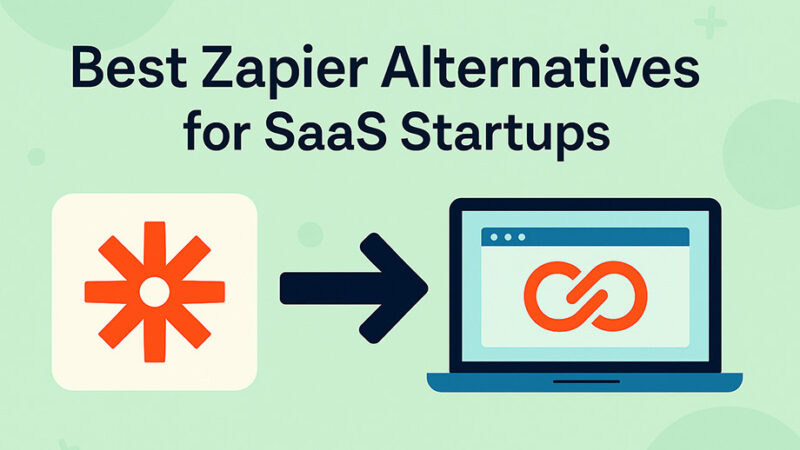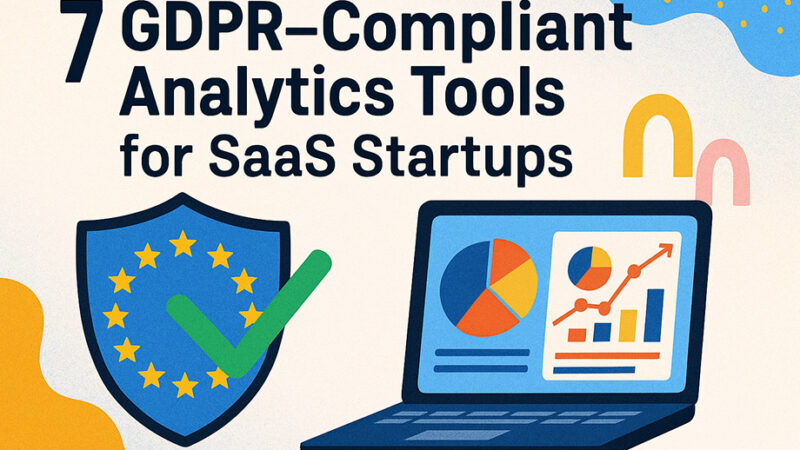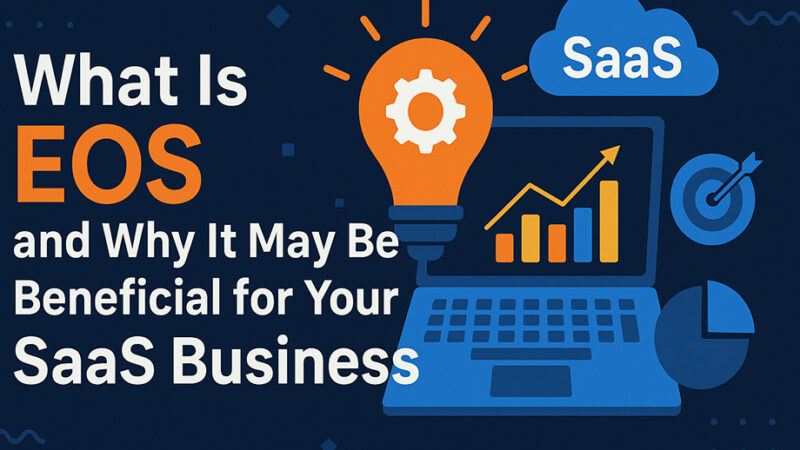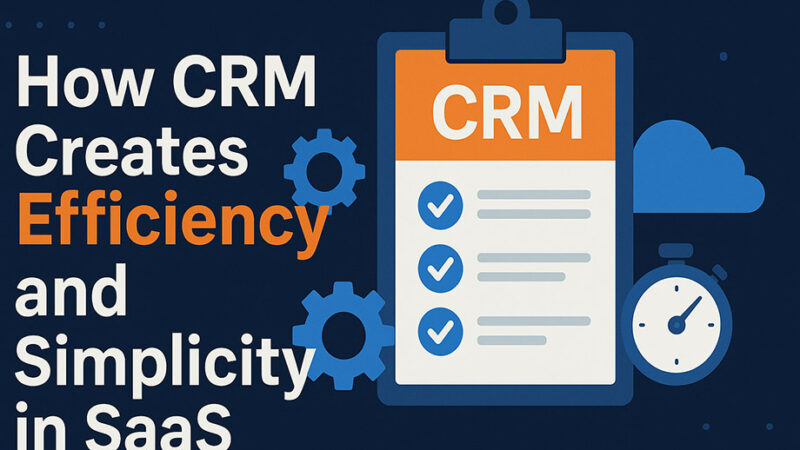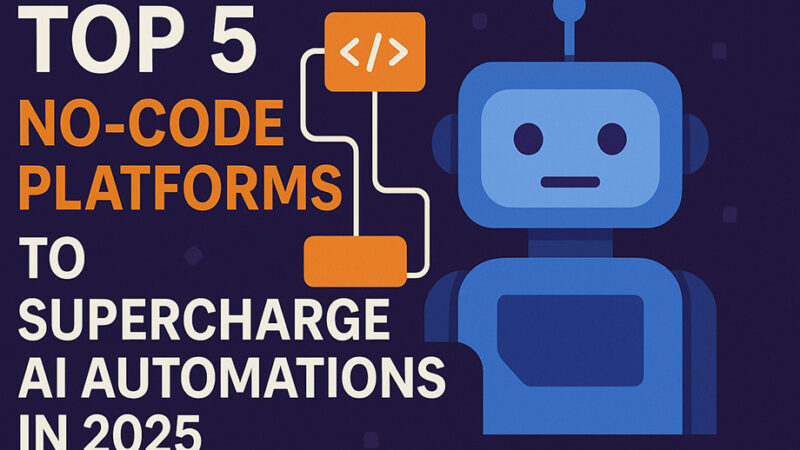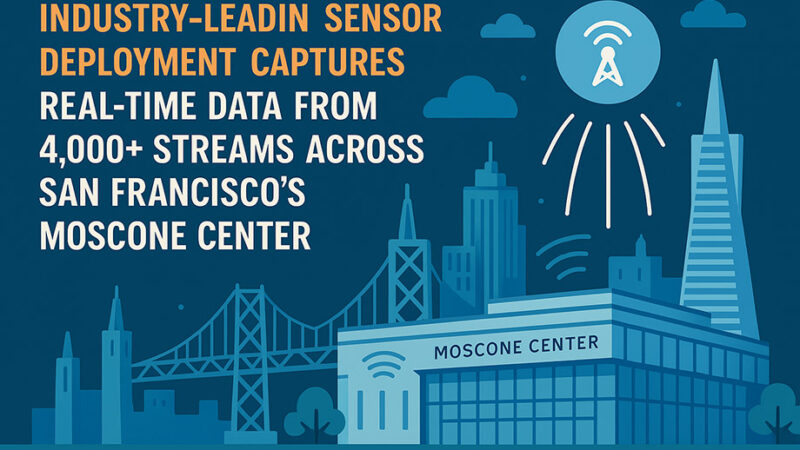How to Reduce Churn During Your SaaS Free Trial – 9 Proven Tactics
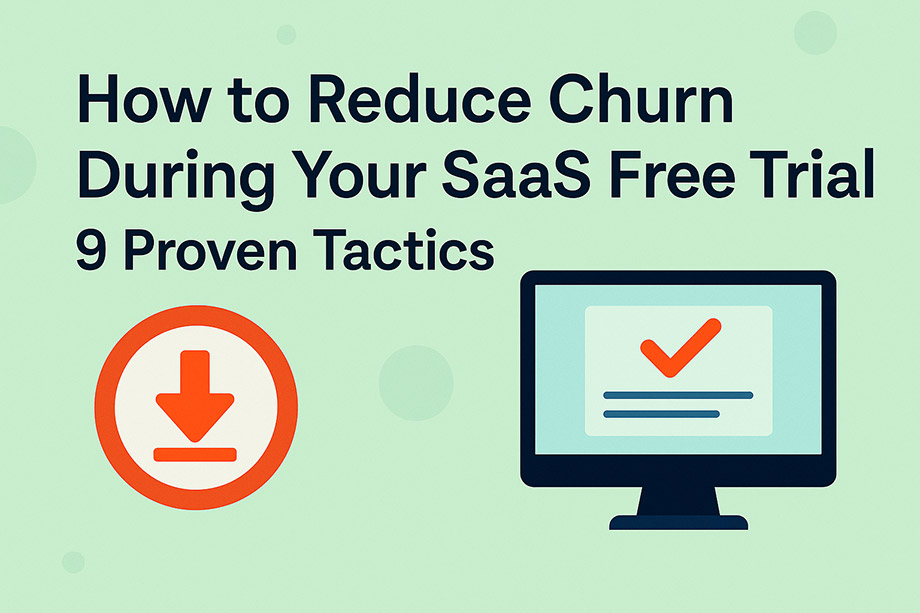
Free trial churn is the silent killer lurking in every SaaS business. While founders obsess over acquisition metrics and celebrate signup spikes, the harsh reality remains: 80-90% of trial users never convert to paying customers. This isn’t just a conversion problem, it’s a compound growth destroyer that quietly sabotages every marketing dollar spent.
The mathematics are brutal. If you’re acquiring 1,000 trial users monthly at $50 per acquisition, but only 100 convert, you’re essentially paying $500 per customer while burning through $45,000 in wasted marketing spend. More importantly, you’re losing potential advocates, product feedback, and market validation from users who could have become your biggest champions.
Early user activation during the trial period determines not just immediate conversion rates, but long-term customer lifetime value, retention, and organic growth through referrals. The companies that master trial-to-paid conversion create sustainable competitive advantages that compound over time.
This guide examines nine battle-tested tactics for reducing free trial churn, drawn from analyzing hundreds of SaaS companies and their conversion optimization experiments. These aren’t theoretical concepts—they’re practical strategies you can implement immediately to transform trial users into loyal customers.
Why Free Trial Users Churn
Understanding the root causes of trial abandonment is essential for developing effective retention strategies.
Poor Onboarding Experience Most SaaS companies treat onboarding as a one-size-fits-all process, failing to account for different user personas, technical skill levels, and use case variations. Users arrive with specific problems and immediate needs, but encounter generic tutorials that don’t address their particular situation. This mismatch between user intent and product introduction creates frustration and early abandonment.
Confusing User Experience Complex interfaces and unclear navigation paths overwhelm new users who are already skeptical about trying another software tool. When users can’t quickly understand how to accomplish their goals, they assume the product isn’t suitable for their needs. This is particularly damaging during trials when users haven’t yet invested time or money in learning the system.
Failure to Demonstrate Immediate Value Trial users need to experience tangible benefits within their first session, not after completing extensive setup processes. Companies that require lengthy configuration, data imports, or complex integrations before users can see results virtually guarantee high churn rates. The modern attention span demands immediate gratification and clear value demonstration.
Lack of Human Connection Automated sequences and self-service resources, while scalable, often fail to address the specific questions and concerns that drive trial abandonment. Users facing obstacles or confusion need immediate human assistance, especially during their first few interactions with the product. The absence of accessible support creates friction at the most critical conversion moments.
Tactic 1: Use Behavior-Based Onboarding Emails
Transform your email onboarding from generic broadcasts into intelligent, behavior-triggered conversations that respond to actual user actions and engagement patterns.
Implementation Strategy Set up email triggers based on specific user behaviors rather than time-based sequences. Monitor key actions like login frequency, feature usage, profile completion, and integration attempts. Create branching email flows that send different messages based on user engagement levels and progress through your product.
High-engagement users who complete setup quickly receive advanced feature introductions and optimization tips. Users who sign up but don’t return get re-engagement messages highlighting quick wins and addressing common hesitations. Users who start but don’t complete key actions receive targeted assistance and additional resources.
Content Personalization Craft email content that directly references user behavior and progress. Instead of generic “Welcome to [Product]” messages, send emails like “You started creating your first project—here’s how to finish in 2 minutes” or “You haven’t logged in for 3 days—here’s what you’re missing.”
Include specific screenshots or data from their account to make emails feel personal and relevant. Reference their industry, company size, or stated use case when providing examples and recommendations.
Timing and Frequency Trigger emails within hours of specific behaviors rather than following rigid schedules. Send re-engagement emails after 24-48 hours of inactivity, not after arbitrary week-long delays. Increase email frequency for highly engaged users who demonstrate strong interest, while reducing frequency for users showing signs of overwhelming or disengagement.
Monitor response rates and engagement metrics to optimize sending frequency and timing for different user segments.
Tactic 2: Create a 3-Day Value Delivery Path
Design a structured pathway that guarantees users experience meaningful value within their first three days, dramatically reducing the likelihood of trial abandonment.
Day 1: Immediate Quick Win Structure the initial user experience around achieving one specific, valuable outcome within the first session. This might be generating their first report, completing their first automation, or seeing personalized insights from their data.
Eliminate unnecessary steps, optional configurations, and advanced features from the Day 1 experience. Focus entirely on the fastest path to value demonstration. Use progressive disclosure to introduce complexity only after users have experienced initial success.
Day 2: Depth and Integration Once users have experienced initial value, introduce them to complementary features that enhance or multiply that value. Show how their Day 1 success can be automated, shared, or expanded upon.
Provide specific use cases and templates that relate to their initial success. If they created a report on Day 1, show them how to schedule automated reports, share dashboards, or set up alerts based on data changes.
Day 3: Habit Formation and Advanced Value Guide users toward actions that create dependency and habit formation. This might involve setting up recurring processes, inviting team members, or integrating with tools they use daily.
Introduce advanced features that significantly differentiate your product from alternatives. Focus on capabilities that would be difficult or time-consuming to replicate elsewhere.
Progress Tracking and Adaptation Monitor user progress through each day’s objectives and adapt the pathway based on completion rates. Users who complete Day 1 objectives quickly might be ready for Day 2 content immediately, while others might need additional support and encouragement.
Identify the specific actions that correlate with higher conversion rates and ensure your 3-day path drives users toward these behaviors.
Tactic 3: In-App Guided Tours and Tooltips
Implement contextual guidance that helps users navigate your product successfully without overwhelming them with information or disrupting their workflow.
Tool Selection and Implementation Choose from established platforms like Userflow, Appcues, or open-source solutions like Intro.js based on your technical requirements and budget. These tools allow you to create interactive tours, contextual tooltips, and progressive disclosure experiences without significant development resources.
Focus on creating tours that are skippable, contextual, and focused on immediate user goals rather than comprehensive feature overviews. Users should be able to opt out of guidance when they feel confident, while receiving help exactly when they need it.
Strategic Tour Design Design tours around specific user journeys and use cases rather than product features. Create different tour experiences for different user personas, ensuring relevance and reducing cognitive load.
Implement just-in-time learning where tooltips and guidance appear exactly when users need specific information, not as part of a lengthy upfront tutorial. This approach respects user agency while providing safety nets for confusion or uncertainty.
Interactive Elements and Feedback Include interactive elements that require user engagement rather than passive consumption. Ask users to complete actions during tours, providing immediate feedback on their success.
Collect feedback on tour usefulness and completion rates to identify areas where guidance is most valuable or where tours might be creating friction rather than reducing it.
Progressive Disclosure Strategy Reveal product complexity gradually as users demonstrate readiness for more advanced features. Start with core functionality tours and introduce advanced feature guidance only after users have mastered basics.
Use completion of specific actions as triggers for more advanced tour content, ensuring users have the foundational knowledge necessary to benefit from complex features.
Tactic 4: Highlight the “Aha!” Moment
Identify and systematically guide users toward the specific experience that transforms them from skeptical trial users into convinced customers.
Aha Moment Identification Analyze your most successful customers to identify the common early experiences that preceded their conversion decisions. This might be generating their first automated report, seeing specific cost savings, or achieving a particular productivity milestone.
Use data analysis to identify the correlation between specific early actions and eventual conversion rates. The “aha” moment is often a combination of using particular features within a specific timeframe, not just feature usage alone.
Systematic Value Delivery Once you’ve identified the aha moment, reverse-engineer your onboarding process to drive every user toward that experience as quickly as possible. Remove obstacles, simplify workflows, and provide the necessary data or setup to make the aha moment achievable.
Create multiple pathways to the same aha moment, accommodating different user preferences, technical skill levels, and use case variations. Some users might reach the moment through guided tutorials, while others prefer self-directed exploration.
Moment Amplification When users achieve the aha moment, explicitly highlight what just happened and why it’s valuable. Many users experience significant value without realizing its importance or uniqueness compared to alternative solutions.
Use modal dialogs, email follow-ups, or in-app notifications to draw attention to successful outcomes and explain their significance. Connect the immediate experience to longer-term benefits and potential expansion opportunities.
Social Proof Integration Combine aha moment experiences with social proof elements, showing users how similar companies or users have leveraged the same capabilities for significant business impact. This connection helps users visualize the potential of continued usage.
Tactic 5: Add Live Chat Support or AI Assistant
Provide immediate assistance during the critical first few days when users are most likely to encounter obstacles that lead to abandonment.
Strategic Support Timing Implement proactive chat support specifically during Days 1 and 2 of trial periods when user frustration and abandonment risk are highest. Monitor user behavior for signs of confusion or stagnation, triggering proactive outreach before users give up.
Use behavioral triggers like extended time on specific pages, repeated clicks on non-functional elements, or periods of inactivity after initial engagement to identify users who might benefit from immediate assistance.
AI Assistant Implementation Deploy AI chatbots trained on common trial user questions and obstacles. Focus on providing immediate answers to setup questions, feature explanations, and troubleshooting common issues.
Ensure seamless handoff from AI to human support when issues exceed bot capabilities. Users should never feel trapped in unhelpful automated loops when they need genuine assistance.
Human Support Integration Staff live chat during peak trial user hours with representatives specifically trained in trial-to-paid conversion best practices. These team members should understand common trial obstacles and be equipped with resources to resolve issues quickly.
Provide chat representatives with user context including signup source, progress through onboarding, and specific features used, enabling more personalized and effective assistance.
Proactive Engagement Strategy Initiate conversations with users showing signs of struggle rather than waiting for them to request help. Simple messages like “I noticed you’re setting up integrations—need any help?” can prevent abandonment while providing valuable assistance.
Monitor chat interaction outcomes to identify common issues that should be addressed through product improvements or enhanced onboarding materials.
Tactic 6: Offer Personal Onboarding for High-Intent Leads
Provide white-glove onboarding experiences for trial users who demonstrate strong purchase intent or come from high-value segments.
High-Intent Lead Identification Develop scoring criteria to identify trial users most likely to convert based on factors like company size, industry, referral source, or specific features accessed. Users from enterprise companies, those who complete detailed profile setup, or referrals from existing customers often warrant personal attention.
Monitor early engagement patterns to identify users who demonstrate serious evaluation behavior, such as inviting team members, attempting integrations, or spending significant time in advanced features.
Calendly Integration and Scheduling Embed scheduling links directly in targeted email sequences or in-app messages for qualified leads. Make scheduling frictionless by offering multiple time options and clearly communicating the value of the onboarding session.
Position personal onboarding as an exclusive benefit rather than standard support, creating perceived value while providing genuine assistance.
15-Minute Onboarding Call Structure Design efficient onboarding calls that focus on immediate value delivery rather than comprehensive feature overviews. Understand the user’s specific use case and goals before the call, then demonstrate exactly how your product addresses their needs.
Use screen sharing to guide users through setup processes that might otherwise cause abandonment. Complete complex configurations during the call, ensuring users leave with a fully functional setup.
Follow-Up and Relationship Building Schedule follow-up touchpoints during the trial period to check on progress and address additional questions. Personal onboarding recipients often become your most valuable customers and strongest advocates when properly nurtured.
Document insights from personal onboarding calls to identify common needs that could be addressed through product improvements or enhanced self-service resources.
Tactic 7: Remind Users of Progress via Email
Create momentum and encourage continued engagement by highlighting user achievements and progress toward meaningful goals.
Progress Tracking Implementation Monitor specific user actions and milestones that indicate progression toward successful product adoption. Track metrics like profile completion percentage, features used, integrations connected, or data processed.
Create visual progress indicators that users can see both within your product and in email communications. Progress bars, completion checklists, and achievement badges tap into psychological drivers that encourage continued engagement.
Achievement-Based Email Content Send emails celebrating specific user accomplishments with clear explanations of why these achievements matter. Instead of generic progress updates, send messages like “You’ve processed 500 leads—here’s how that compares to similar companies” or “You’ve automated 3 workflows—you’re saving approximately 5 hours per week.”
Include specific next steps that build upon current progress, providing clear pathways for continued advancement. Connect current achievements to larger goals and potential business impact.
Milestone Celebration Strategy Recognize significant user achievements with special acknowledgment and additional resources or features. Users who reach important milestones might receive early access to new features, exclusive content, or direct access to your product team.
Use milestone achievements as opportunities to gather feedback and testimonials, while reinforcing the value users are already receiving from your product.
Personalized Recommendations Based on user progress and behavior patterns, provide personalized recommendations for next steps, additional features, or optimization opportunities. Show users how similar companies or users have expanded their usage for additional benefits.
Tactic 8: Ask Why They Didn’t Convert
Gather actionable feedback from churned trial users to identify improvement opportunities and potentially recover interested prospects.
Exit Survey Implementation Deploy brief, focused surveys when users approach trial expiration without converting or when they exhibit clear abandonment behaviors. Keep surveys short (3-5 questions) and focused on specific obstacles rather than general satisfaction.
Use tools like Hotjar polls, Typeform, or simple email surveys to gather feedback. Timing is crucial—reach out when the experience is fresh but users aren’t feeling pressured to make immediate decisions.
Strategic Question Design Ask specific questions about obstacles encountered, missing features, pricing concerns, or competitive alternatives being considered. Avoid leading questions and provide multiple-choice options alongside open-ended feedback opportunities.
Focus on actionable feedback that can inform product development, pricing strategies, or onboarding improvements. Questions like “What would have made you more likely to subscribe?” often yield valuable insights.
Feedback Analysis and Action Systematically analyze exit survey responses to identify patterns and common themes. Look for feedback that appears repeatedly, as these issues likely affect many users beyond just survey respondents.
Create action plans for addressing common concerns, whether through product improvements, pricing adjustments, feature additions, or enhanced support resources.
Recovery Outreach Strategy Use exit survey responses as opportunities for personalized follow-up with users who indicate specific, addressable concerns. If users mention pricing issues, consider offering trial extensions or discount opportunities. If they mention missing features, inform them about upcoming developments or alternative approaches.
Some churned trial users can be recovered through direct outreach that addresses their specific concerns, turning lost prospects into satisfied customers.
Tactic 9: Extend Trial Based on Usage
Provide additional trial time for users who demonstrate genuine engagement but need more time to fully evaluate your product’s value.
Usage-Based Extension Criteria Identify specific usage patterns that indicate serious evaluation but insufficient time for complete assessment. This might include users who have used key features, invited team members, or started but not completed complex setup processes.
Avoid extending trials for inactive users, as additional time rarely converts users who haven’t engaged meaningfully with your product. Focus extensions on users showing clear intent but facing time constraints.
Automated Extension Logic Implement automated systems that grant trial extensions based on predetermined usage criteria. Users who meet specific engagement thresholds receive additional trial time without needing to request it.
Communicate extensions proactively, explaining why the user qualified and what they should accomplish during the additional time. Position extensions as rewards for engagement rather than desperate retention attempts.
Strategic Extension Communication Frame trial extensions around user success rather than company desperation. Messages like “You’ve made great progress with [specific features]—here are 3 more days to complete your setup” feel valuable rather than pushy.
Provide specific guidance for making the most of extended trial time, including recommended actions, available support resources, and clear conversion pathways.
Extension Outcome Tracking Monitor conversion rates for extended trial users compared to standard trial lengths. Some extensions result in higher conversion rates, while others simply delay inevitable churn decisions.
Use extension period behavior to refine your understanding of successful user patterns and optimize standard trial experiences for future users.
Conclusion
Reducing free trial churn requires systematic attention to user experience, timely intervention, and continuous optimization based on user feedback and behavioral data. The tactics outlined above work synergistically—implementing multiple approaches simultaneously often produces better results than focusing on individual strategies.
The most successful SaaS companies treat trial periods as intensive customer success initiatives rather than passive evaluation periods. They proactively guide users toward value realization, remove obstacles to adoption, and provide the support necessary for informed purchase decisions.
Start by implementing behavior-based onboarding emails and creating your 3-day value delivery path, as these tactics provide the foundation for other optimization efforts. Once these basics are established, add in-app guidance, support resources, and feedback collection mechanisms to create a comprehensive trial experience.
Remember that trial optimization is an ongoing process requiring continuous measurement, testing, and refinement. What works for your specific product, market, and user base may differ from general best practices, making experimentation and data analysis essential for long-term success.
Ready to transform your trial-to-paid conversion rates? Begin by identifying your current “aha” moment through customer analysis, then audit your existing trial experience against the nine tactics outlined above. Most SaaS companies can achieve 20-40% improvements in trial conversion rates by systematically addressing the obstacles that drive user abandonment.
Take action this week: Set up behavior-based email triggers for your most common user actions, and create a simple 3-day value delivery checklist. These foundational changes often produce immediate improvements while establishing the framework for more sophisticated optimization efforts. Your future paying customers are currently in trial periods—make sure they have every opportunity to discover your product’s true value.


